Three reasons to consider an ERP with omnichannel features
Omnichannel retailing is a modern approach to commerce, that focuses on designing a cohesive user experience for customers at every touchpoint. Omnichannel retailing strategies have become more popular over the past couple of years. In 2018, shopping habits are complex. Consumers no longer see an item in a shop and buy it right away. Instead, they research products on mobile, try products in brick-and-mortar stores but order online, order online and pick up in store, and so on. Shoppers are not loyal to a certain channel or company anymore. In today's commerce environment, retailers need to focus on their presence across channels and make sure they offer supreme customer experience.
In order to do so, businesses need systems that can facilitate omnichannel strategies. An essential system is an ERP system. In this blog, we'll give you three reasons why to consider an ERP with omnichannel features.
1. Streamlined omnichannel sales
According to a recent survey by BigCommerce.com, 67% of millennials and 56 % of Gen Xers prefer to search and purchase online. And according to Forrester, $1.5 trillion in retail sales begin online and end in-store. This means that in order to be ensured of success, retail businesses need to be present in multiple online and offline channels. However, this looks easier than done. A true omnichannel experience does not only mean selling in multiple channels but also providing a consistent look and feel, as well as consistent pricing and customer experience.
Get more ERP feature ideas with this guide to 70 features to look for in your next ERP
Consistent pricing
The first thing to take into consideration is omnichannel pricing. This means that retailers need to provide customers with consistent price information across channels, in real time. This strategy ensures a good customer experience - it becomes simple for customers to interact with retailers, regardless of where or when the interaction takes place. As a result, omnichannel pricing removes many of the barriers to purchase.
Buy online, pick up and return in-store
A popular strategy is buying items online and picking them up in-store. he most common reason cited by customers, is wanting to avoid shipping charges (73 percent), while others cited needing an item right away. While offering an in-store pickup option might feel like an extra thing to worry about for some retailers, it actually brings with it a big opportunity to increase foot traffic and sales at the same time.
The same logic applies to returning items bought online. Customers want to know that if they need to return something they bought online, they can return it how and where they want. Returning online purchases can be a pain for customers, even if retailers offer free or expedited shipping.
In-store ordering from online stock
Customers may also come to your store without consulting online. They might want a specific item which your store no longer had in stock. Therefore, consumers should be able to order out-of-stock merchandise and have it shipped to their desired destination.
What can an ERP do?
An omnichannel ERP will give the possibility to manage products in one centralised system. This means that prices for various channels can be set and monitored within one interface. Also, many omnichannel ERP’s offer the possibility of an in-store assistant. This is a piece of software that can be installed on a hand-held device. This allows store staff to prepare online ordered products, or register returned items into the stores inventory right away.
2. In Control with Inventory Visibility
A second advantage of implementing an ERP system is the possibility to get more control over inventory. An omnichannel ERP will make sure you can see what is in stock and where.
Know the location of products
Knowing the location of products is crucial for many businesses. How many products are in store and how many are located in warehouses? Is restocking needed?
Keeping track of many different warehouses and sales channels can be a challenge. An omnichannel ERP will allow knowing where products are located in real-time. See how much stock is left in warehouses and use this information to make sure you purchase new stock in time. Advanced ERP systems can even forecast how much inventory is needed in your warehouses and sales channels based on analytical algorithms.
Show the location of products
Besides the importance of inventory visibility for businesses themselves, customers will also appreciate seeing where products are located. Showing customers what you have in stock, and where you have it, is a tactic that has proven to increase sales; Research by Forrester has found that 41% of retailers have seen a positive impact on sales after enabling inventory visibility. In the digital age, customers want certainty and reliability while shopping online. They want to be sure that the product they are about to order is actually in stock and will be available to them within a certain timeframe.
3. Ultimate customer insight
A huge advantage of having an omnichannel strategy is the possibility to track customers, as well as allow loyalty programs. An omnichannel ERP can be a powerful tool, especially when combined with other systems such as a CRM.
Track customers across sales channels
Omnichannel ERP systems register every sale across sales channels. This allows business to track their customers in ways that were not abe before. Using the right ERP system will help to answer questions such as: what is our customer journey like? Where do customers buy, online in-store, via marketplaces or combinations of these channels? What is the average order value? This will give you important insights which will help to set up effective marketing campaigns. Most ERP systems do not offer comprehensive marketing capabilities. Therefore, having a CRM and ERP integrated together makes for a very powerful tool.
Allow loyalty programs
But how to identify whether a customer buys online and offline?
When ordering online, customers fill in their name and address. However, in the case of offline purchases, the customer can be anonymous. This problem may be solved by introducing omnichannel loyalty programs. Give the customer a customer card or code and let them save for special promotions. The idea of loyalty programs isn't new. However, omnichannel customer loyalty programs are. Businesses are now able to track their customer's behavior across channels thanks to these programs.
But what does this have to do with an ERP? As all orders are registered in the ERP system, so are the customers. Choose an ERP system that allows you to track customers across channels, and register whether they are part of the customer program. This will give valuable insight into KPI's for customers in the loyalty program. Again, an ERP/CRM implementation will help to explore even more marketing possibilities.
Free white paper
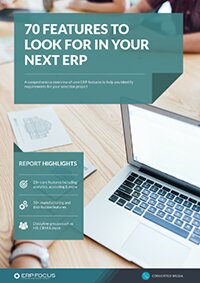
70 features to look for in your next ERP
A comprehensive guide to help you identify requirements for your ERP selection
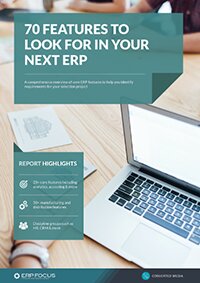
Featured white papers
-
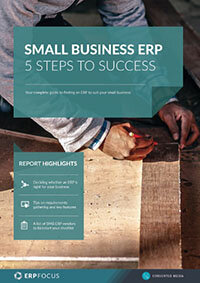
Small business ERP: five steps to success
Download -
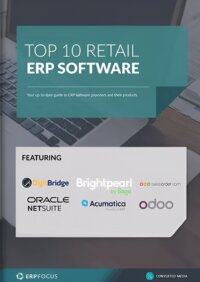
Related articles
-
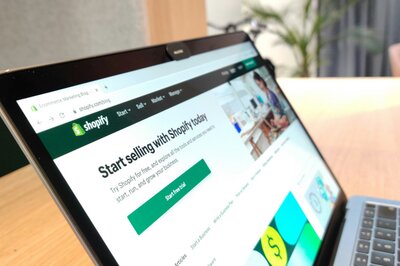
Nine signs you need an eCommerce ERP integration
A guest blog from Brightpearl discussing eCommerce ERP and integration
-

CMMC Compliance: What Aerospace and Defense Manufacturers Need to Know
Key insights on CMMC compliance, deadlines, and securing DoD contracts with CMMC 2.0 certificatio...
-
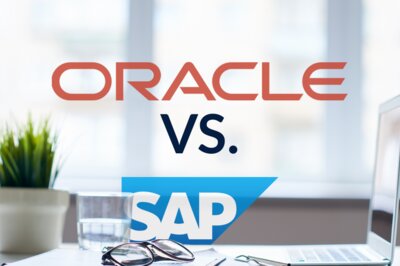
Real life experiences: Oracle vs SAP
A project manager's take on Oracle and SAP' strengths and weaknesses

